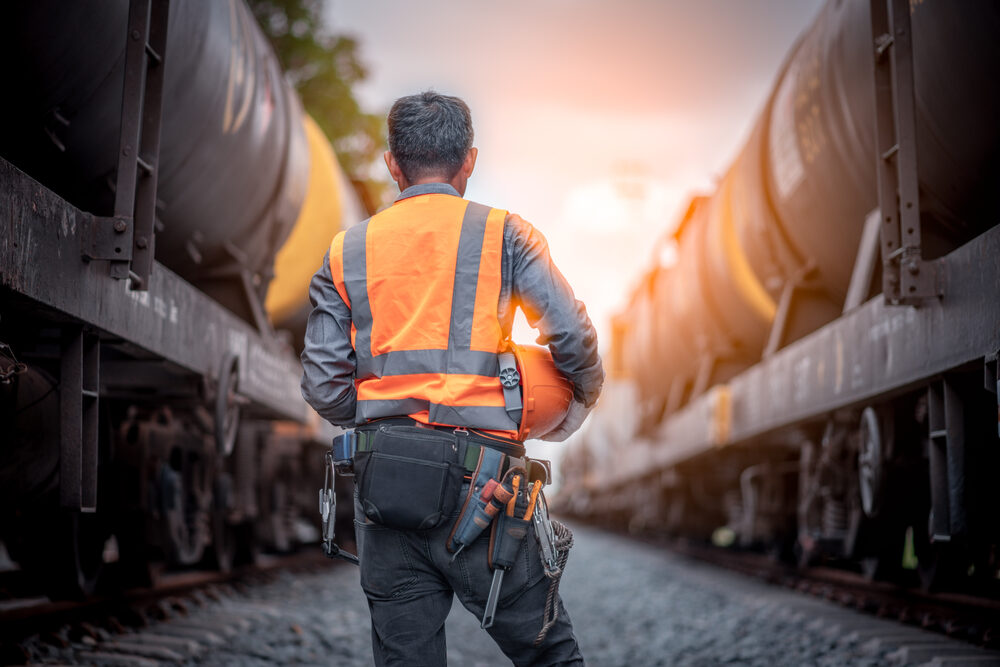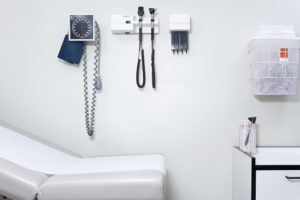
In 2023, a total of 3,449 railroad employees were injured or sick while working on the railroad, according to the National Safety Council (NSC). Seven employees died that year.
These numbers show a decrease in railroad worker injuries and deaths. According to data from the Federal Railroad Administration (FRA), train accident rates have dropped 33 percent since 2005 and 15 percent year over year.
Despite these improvements, railroad work carries inherent risks, and when railroad injuries occur, they veer and may involve death given the large moving equipment involved in railroad activities. If it happens to you, it can be traumatic and stressful.
You may wake up a week or two afterward, reeling from hospital visits and days out of work, only to realize that you have been talked out of filing an accident report or were hoping not to have to make an accident report, but your injuries got much worse as each day passed.
You stare at your mounting medical bills and potential therapy costs and wonder, “Oh no. Can I still pursue compensation without that injury or accident report?”
The answer is the federal law called the Federal Employers Liability Act does not require the filing of an accident report at all. But read the rest of this article because there are still pitfalls that you need to overcome.
Our Virginia Beach railroad accident injury attorneys are nationally recognized for representing railroad workers in injury cases. At Shapiro, Washburn, & Sharp, we deeply understand FELA and are well-equipped to guide you through the intricacies of filing a claim, ensuring that your rights are protected. Call us today at 833-997-1774 for a free consultation.
What Kind of Accident Report Are We Talking About?
Many companies require employees to file an accident report after an accident. This is an official document detailing the circumstances surrounding the accident. It includes information about the events leading up to the accident, what kind of injury you sustained, any witnesses who may have been present, and any other contributing factors.
Companies want you to fill out these types of reports so they have an official document of the incident. It also acts as an official notice of the accident and creates a record that may be used in legal proceedings. Once the company has it on file, it may initiate an internal investigation, depending on company protocols and procedures.
This has to do with the company you work for; however, it has nothing to do with the Federal Employers Liability Act (FELA) under which all railroads in Interstate commerce operate.
What Is FELA?
FELA is a federal law enacted in 1908 to protect and compensate railroad workers injured on the job due to their employer’s negligence. It’s a little like workers’ compensation, except that it requires the employee to prove that the railroad company’s negligence contributed to their injury.
Standard workers’ compensation pays benefits to injured employees regardless of fault. FELA, however, was designed as a fault-based system because back in 1908, the railroad industry was hazardous, and injured workers had no recourse for compensation. By making railroad companies financially liable for negligence, lawmakers hoped to incentivize them to prioritize workplace safety.
The FELA offers many advantages over standard workers’ compensation because you don’t get to sue your employer under state workers’ compensation laws—the maximum recoveries are set by statute. There are no jury trials under state workers’ compensation, plus workers’ compensation provides caps on each element of damage that can be recovered—and they are very limited.
FELA also allows employees to recover higher levels of compensation in many cases. Damages are determined by a jury trial if you request a jury trial and the case goes all the way to a jury verdict. Standard workers’ compensation typically provides limited, fixed benefits. FELA allows injured workers to recover full damages, including medical expenses (past and future), lost wages and earning capacity, pain and suffering, and other non-economic losses.
Many times, these cases are settled without a lawsuit, but other times, they are settled prior to jury determination.
Does FELA Require an Accident Report?
Whereas the company you work for may require you to complete an accident report, FELA has no such requirement. Your employer may have specific rules about what paperwork you need to fill out after an accident, but that falls under internal company regulations, not FELA itself.
That means that while it’s wise to adhere to your company’s accident procedures, failing to do so (or to do so in a timely fashion) does not mean you can’t pursue a FELA claim.
Evidence that Supports Your FELA Case
While you don’t have to have a company-based accident report, it will help your case to have other evidence supporting the date your injury occurred, how your injury occurred, and details on why the railroad itself was negligent or careless. Keep in mind that it could be a co-worker who was careless—it doesn’t have to be a supervisor.
Witness Statements
Co-workers or bystanders who saw what happened may be able to corroborate the date of the incident, how the incident happened, the date it occurred, and your account, and help highlight any unsafe conditions that may have been present at the time. Your railroad injury attorney can help you gather statements from these witnesses.
Medical Records
Medical records from the doctor’s office, hospital, therapy center, and more can all show what type of injury you suffered and the treatments necessary. This is why it’s so important to always seek medical attention immediately after an accident.
Photographic Evidence
It’s wise to take photographs of the accident site after the accident. Pictures of the scene, equipment, or hazardous conditions can provide tangible proof of negligence. If you are unable to take these photos at the time, maybe someone else could. Video evidence, as well, can be highly compelling in a FELA case.
Maintenance and Training Records
Your railroad injury attorney can help you gather these types of records from the company. They may show lapses in equipment upkeep or inadequate employee safety training that can further substantiate claims of employer negligence.
Will I Face Retaliation If I Didn’t File an Accident Report?
Though FELA does not penalize you for failing to file an accident report, your company might make an attempt to retaliate against you because they’re not happy when you report an accident and didn’t make a report the day it happened.
Fortunately, there’s also a federal regulation that prohibits railroads from retaliating against an employee who notifies them after the fact of a potential injury. First, they have to accept the report. Given that they’ll face the economic consequences of your personal injury claim, it’s no wonder that they become averse to your interests at that point.
This is when you should strongly consider obtaining a skilled railroad FELA attorney.
How Can a Railroad Injury Attorney Help?
If you or a loved one suffered from a railroad injury, contact us at Shapiro, Washburn, & Sharp right away. Firm partner Richard N. Shapiro has twice served as Chair of the Railroad Law Section of the nation’s most prominent trial lawyers association and is the co-author of a legal treatise on railroad law titled Railroad Health and Safety; A Litigator’s Guide. We also offer two downloadable legal guides focused on railroad worker injury law:
What Railroad Claim Agents Won’t Tell You (But You Must Know)
Dos & Don’ts When Injured on the Job at a Railroad
We’ve represented railroad workers in every type of injury and occupational disease case, such as this 57-year-old railroad worker who suffered a back injury when he was trying to manipulate equipment that had been listed on the official safety reports for several months. When he contacted us, our attorneys visited the railroad yard with our client and obtained photographs and video footage of the equipment. Our client also made copies of the safety reports concerning the defective equipment and located emails where his supervisor was told about the equipment and made efforts to replace it, but the repair/replacement was delayed.
While the case was pending in court, we helped negotiate a $400,000 settlement.
Come see us at our offices in Virginia Beach, Hampton, Norfolk, Portsmouth, and Chesapeake.
RELATED CONTENT

Rick Shapiro has practiced personal injury law for over 30 years in Virginia, North Carolina, and throughout the Southeastern United States. He is a Board-Certified Civil Trial Advocate by the National Board of Trial Advocacy (ABA Accredited) and has litigated injury cases throughout the eastern United States, including wrongful death, trucking, faulty products, railroad, and medical negligence claims. During his three-decade career, Shapiro has won client appeals before the VA Supreme Court, VA Court of Appeals, NC Supreme Court, SC Supreme Court, WV Supreme Court, TN Supreme Court, and three times before the United States Court of Appeals for the Fourth Circuit, underscoring Shapiro’s trial achievements. In addition, he and his law firm have won settlements/verdicts in excess of $100 million. His success in and out of the courtroom is a big reason why he was named 2019 “Lawyer of the Year” in railroad law in U.S. News & World Report's Best Lawyers publication (Norfolk, VA area), and he has been named a “Best Lawyer” and “Super Lawyer” by those peer-reviewed organizations for multiple years. Rick was also named a “Leader in the Law, Class of 2022” by Virginia Lawyers Weekly (total of 33 statewide honorees consisting of lawyers and judges across Virginia). And in September 2023, Rick was selected as a recipient of the National Board of Trial Advocacy (NBTA) 2023 President’s Award. Although many nominations were submitted from across the country, Rick was just one of eight attorneys chosen by the prestigious National Board which certifies civil trial attorneys across the U.S. Rick was also recently named to Virginia Lawyers Weekly 2024 Virginia’s Go To Lawyers Medical Malpractice. The attorneys awarded this honor are nominated by their colleagues and chosen by a panel from the publication.










Comments for this article are closed.